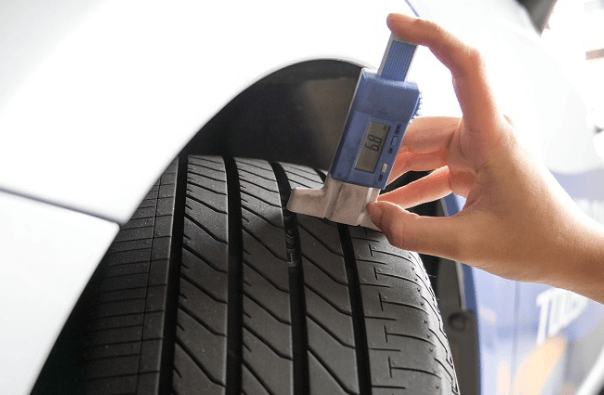Tyre Testing: How to Ensure Safety Before Driving?

Tyres are the unsung heroes of vehicle safety. They are the only contact between your car and the road. They are crucial in traction, handling, braking, and overall driving stability. Regardless of how advanced your vehicle’s technology is, the condition of your tyres directly impacts your safety.
Poorly maintained or damaged sets can lead to accidents, reduced fuel efficiency, and unexpected breakdowns. This makes regular tyre testing an integral aspect of vehicle maintenance. Today, we will guide you on how to test tyres to ensure safety before driving.
A Stepwise Guide to Tyre Testing
Step 1: Inspect Tyre Tread Depth
Treads are critical for maintaining grip, especially on wet or slippery roads. The depth of the tread describes how well tyres can reduce the risk of hydroplaning. You need to check it to ensure compliance with regulations. Tyres in Dubai and other regions should have a tread depth of at least 1.6mm.
See also: Business Set Up in Dubai: Unlock New Opportunities in the UAE
Step 2: Check Tyre Pressure Regularly
Proper tyre pressure is critical for optimal performance and safety. Over-inflated or under-inflated tyres can affect handling, braking, and fuel efficiency. You should use a reliable tyre pressure gauge to check the pressure. After that, you have to adjust the pressure as recommended in the manual.
Step 3: Look for Visible Damage
You should inspect your tyres for visible signs of damage, such as cuts, cracks, bulges, or punctures. Small stones or debris embedded in the tread can lead to slow punctures or sudden blowouts.
Bulges or bubbles on the sidewall indicate structural damage, which can result in tyre failure. You can use a flashlight to examine hard-to-see areas and pay extra attention after driving on rough roads.
Step 4: Monitor Tyre Age
Even if your tyres appear in good condition, their age can compromise safety. Rubber degrades over time, which makes them less flexible and more prone to cracks. Most manufacturers recommend replacing them every six years.
Step 5: Ensure Proper Wheel Alignment
Misaligned wheels can cause uneven wear and poor handling. If your vehicle pulls to one side or the steering feels off-centre, it’s a sign that your wheels may be misaligned. You should have a professional check regularly and correct the alignment to ensure safe and smooth driving.
Step 6: Rotate Tyres Periodically
Tyres wear unevenly based on their position on the vehicle. Front ones tend to wear faster due to steering and braking forces. To ensure even wear and longer life, rotate your tyres every 5,000 to 8,000 miles. This process involves swapping the front pair with the rear one or rotating them diagonally.
Step 7: Be Mindful of Seasonal Changes
Temperature changes significantly affect tyre performance. Cold weather reduces tyre pressure. Meanwhile, hot weather increases it. Consider switching them as the weather changes. When doing so, make sure you opt for Cooper, Michelin, or other branded options.
Tyre safety is a crucial aspect of responsible driving. It directly impacts your safety, fuel efficiency, and overall driving experience. You can test them by following the aforementioned steps.



